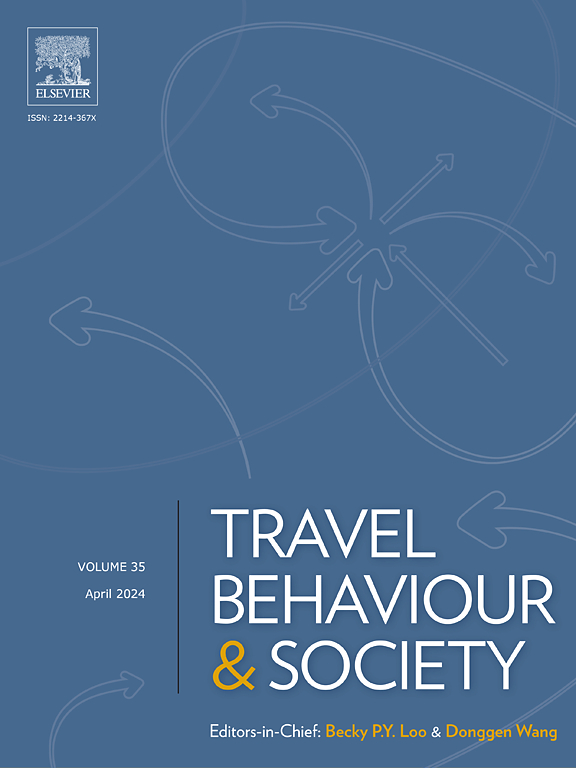基于用户id的聚类识别方法:基于用户id的无桩共享单车与地铁交通融合的建筑环境效应比较
IF 5.7
2区 工程技术
Q1 TRANSPORTATION
引用次数: 0
摘要
无桩共享单车是解决与地铁系统连接的第一英里和最后一英里出行问题的有效策略。现有的研究大多简化了迁移行为的估计,在分析建筑环境影响时将综合出行视为单一类别。这增加了错误估计综合行程和建筑环境影响不稳定性的可能性。本研究以南京市共享单车项目为例,基于通勤者居住/工作地点与地铁站点的关系,采用时空聚类方法将综合出行分为四种通勤场景。随后构建梯度增强回归树模型来探索这些场景中建筑环境对集成的不同影响。结果表明:(1)与晚上相比,以通勤为目的的综合出行在早晨出现的频率更高。(2)超过30%的综合出行位于距离地铁出入口50 m以外的地方,这表明两种模式的结合存在阻力。(3)人口密度对工作场所的影响呈倒u型。(4)购物设施和混合土地利用仅在地铁-住宅场景中发挥刺激作用。(5)离市中心较近且距离大于16 km的区域综合出行量较低。这些发现有助于更好地理解建筑环境变量影响无桩共享单车和地铁系统整合的具体场景和范围。本文章由计算机程序翻译,如有差异,请以英文原文为准。
Comparisons of built environment effects on the integration of dockless bike-sharing and metro transit across commuting scenarios: A user ID-based clustering identification method
Dockless bike-sharing is an effective strategy for addressing the first- and last-mile travel problem in connecting with metro systems. Most existing studies simplified the estimation of transfer behaviors and considered integrated trips as a single category when analyzing the impact of the built environment. This increases the possibility of misestimating integrated trips and instability of built environment effects. Drawing on the bike-sharing project in Nanjing, this study employs a spatio-temporal clustering method to categorize integrated trips into four commuting scenarios based on the relationship between commuters’ residence/workplace locations and metro stations. Gradient Boosting Regression Tree models are subsequently constructed to explore the varying influence of the built environment on integration in these scenarios. The results indicate that:(1) Compared to the evening, integrated trips are more frequently observed in the morning for commuting purposes. (2) Over 30 % of integrated trips are situated beyond 50 m from metro entrances, indicating resistance to the combination of these two modes. (3) The impact of population density shows an inverted U-shape in the metro to workplace scenario. (4) shopping facilities and mixed land use solely exert a stimulating effect in the metro to residence scenario. (5) Both areas in proximity to the city center and situated more than 16 km away exhibit lower integrated trips. These findings provide a better understanding of the specific scenarios and ranges in which built environment variables influence the integration of dockless bike-sharing and metro systems.
求助全文
通过发布文献求助,成功后即可免费获取论文全文。
去求助
来源期刊

Travel Behaviour and Society
TRANSPORTATION-
CiteScore
9.80
自引率
7.70%
发文量
109
期刊介绍:
Travel Behaviour and Society is an interdisciplinary journal publishing high-quality original papers which report leading edge research in theories, methodologies and applications concerning transportation issues and challenges which involve the social and spatial dimensions. In particular, it provides a discussion forum for major research in travel behaviour, transportation infrastructure, transportation and environmental issues, mobility and social sustainability, transportation geographic information systems (TGIS), transportation and quality of life, transportation data collection and analysis, etc.
 求助内容:
求助内容: 应助结果提醒方式:
应助结果提醒方式:


